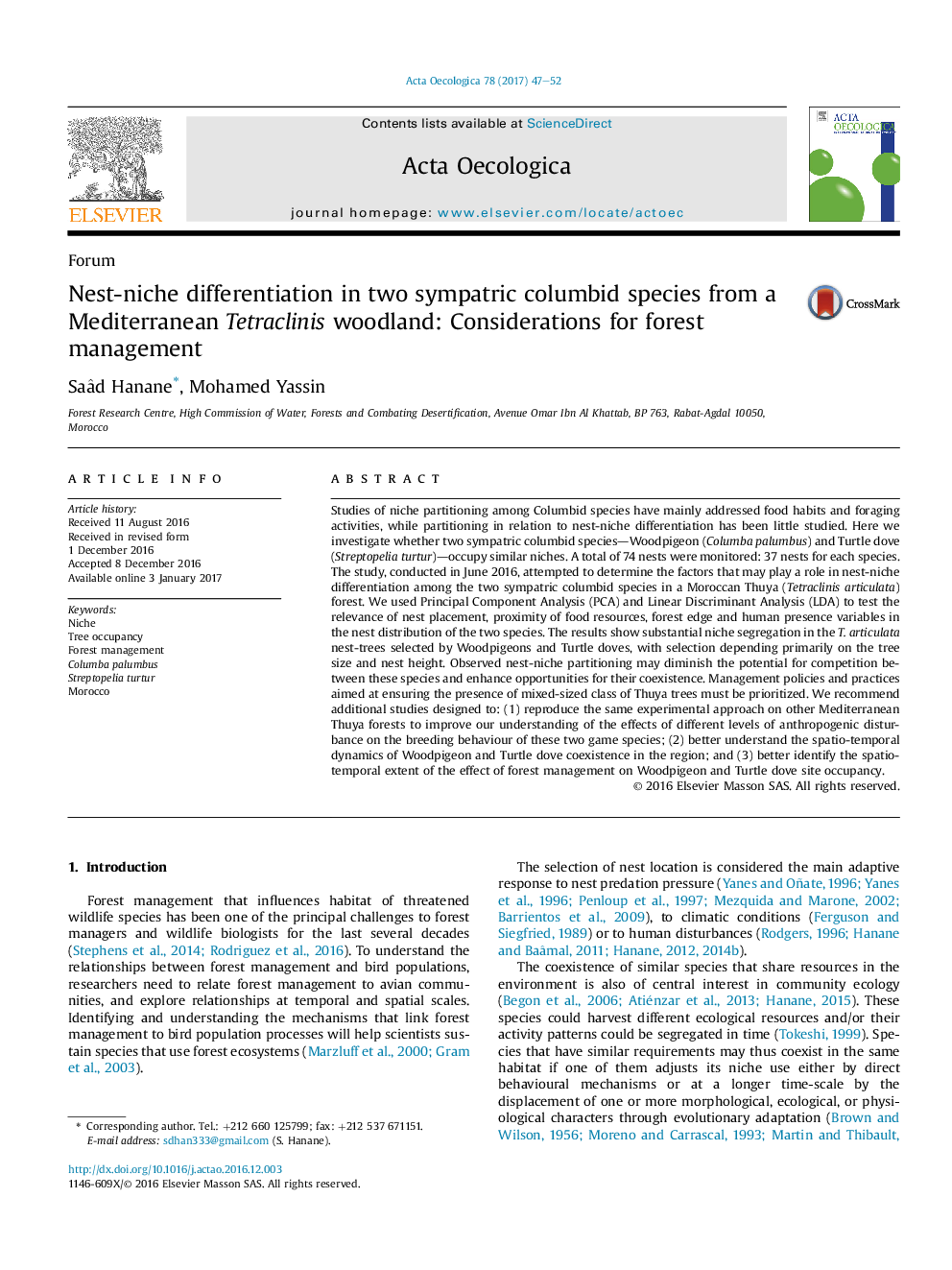| Article ID | Journal | Published Year | Pages | File Type |
|---|---|---|---|---|
| 5742530 | Acta Oecologica | 2017 | 6 Pages |
â¢Few published studies have assessed nest-niche differentiation among Columbid species.â¢Woodpigeons and Turtle doves species exhibit differences in Thuya tree use.â¢Woodpigeons chose nesting trees that were greater in height and larger in DBH compared to Turtle doves.â¢Forest managers should ensure the presence of mixed-sized class of Thuya trees.
Studies of niche partitioning among Columbid species have mainly addressed food habits and foraging activities, while partitioning in relation to nest-niche differentiation has been little studied. Here we investigate whether two sympatric columbid species-Woodpigeon (Columba palumbus) and Turtle dove (Streptopelia turtur)-occupy similar niches. A total of 74 nests were monitored: 37 nests for each species. The study, conducted in June 2016, attempted to determine the factors that may play a role in nest-niche differentiation among the two sympatric columbid species in a Moroccan Thuya (Tetraclinis articulata) forest. We used Principal Component Analysis (PCA) and Linear Discriminant Analysis (LDA) to test the relevance of nest placement, proximity of food resources, forest edge and human presence variables in the nest distribution of the two species. The results show substantial niche segregation in the T. articulata nest-trees selected by Woodpigeons and Turtle doves, with selection depending primarily on the tree size and nest height. Observed nest-niche partitioning may diminish the potential for competition between these species and enhance opportunities for their coexistence. Management policies and practices aimed at ensuring the presence of mixed-sized class of Thuya trees must be prioritized. We recommend additional studies designed to: (1) reproduce the same experimental approach on other Mediterranean Thuya forests to improve our understanding of the effects of different levels of anthropogenic disturbance on the breeding behaviour of these two game species; (2) better understand the spatio-temporal dynamics of Woodpigeon and Turtle dove coexistence in the region; and (3) better identify the spatio-temporal extent of the effect of forest management on Woodpigeon and Turtle dove site occupancy.
